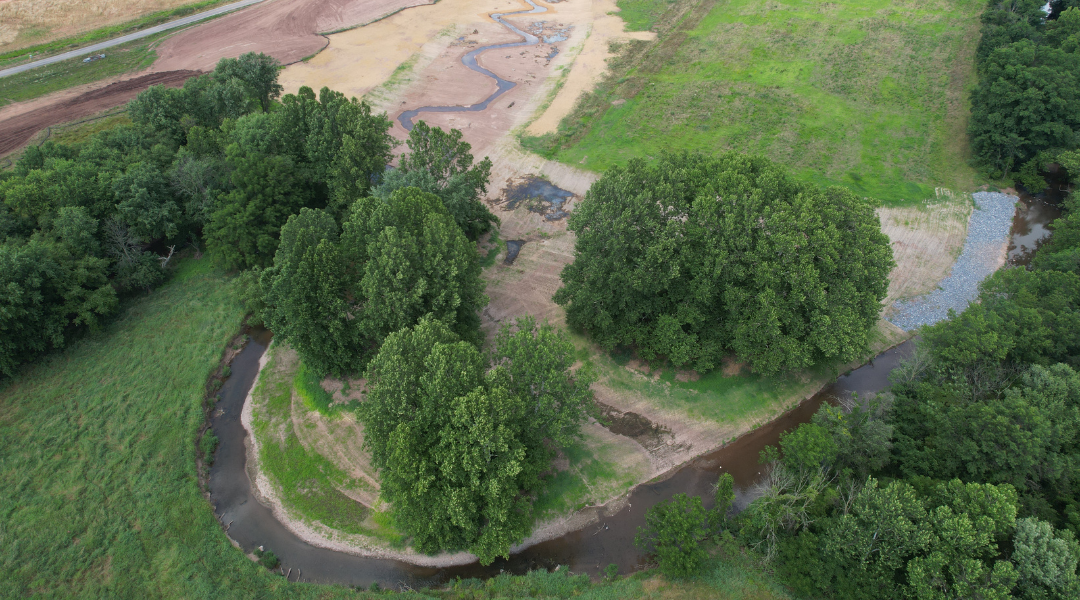If you’re a municipality or other entity that owns a municipal separate storm sewer system (MS4), you’re likely looking for ways to earn pollutant load reduction credits and meet your MS4 requirements. But with cost and efficiency top of mind as well, it can be hard to determine the best project to meet those goals.
If an appropriate site can be identified, stream restoration is often the most cost-effective type of project per MS4 credit. Here, we’ll provide an overview of different ways stream restoration can meet the requirements of the MS4 program.
Stream Restoration Project Types
Stream restoration projects return a waterway to its natural form and processes with the aim of reducing erosion and capturing pollutants. There are five types of these projects that can be used to satisfy MS4 permit requirements:
- Protocol 1: Prevented Sediment: Projects that stabilize banks and prevent sediment erosion in 1st–3rd order streams with perennial flow.
- Protocol 2: Hyporheic Exchange: Projects that promote denitrification.
- Protocol 3: Floodplain Reconnection: Projects that reconnect a stream channel with its natural floodplain.
- Protocol 4: Dry Channel Regenerative Stormwater Conveyance: Projects that address a zero-water channel with only intermittent flow.
- Protocol 5: Outfall and Gully Restoration: Projects that fix erosion issues in outfalls and gullies that lead to high sediment loads being released downstream.
Eligibility to Meet MS4 Requirements
There are many variables that will ultimately determine if your specific stream restoration project is eligible to earn MS4 credits. However, there are three general criteria the project must meet:
- It must occur on an actively degrading stream channel.
- It must restore more than 100 linear feet of channel.
- It must be a systemic restoration, not just a localized fix.
Also, after a project is finished, the MS4 operator must also complete post-construction monitoring, maintenance, and verification to earn credits.
A Project Example
Flyway recently took part in the first phase of a stream restoration project designed to meet local MS4 requirements. The Conewago Creek had been impaired by agricultural activity and was showing aggressive erosion and large amounts of legacy sediment. Among other problems, these impairments were causing significant flooding downstream.
This stream restoration project was designed to:
- Remove 125,000 cubic yards of legacy sediment
- Create 125,000 cubic yards of flood storage compacity
- Reduce annual sediment load by 509 tons
- Restore 4,877 feet of stream channel and create 2,988 feet more
- Restore 15.2 acres of floodplain
Phase one alone satisfied the MS4 requirements for reducing sediment loadings. Once the remaining two phases are complete, expected outcomes include:
- Flooding reductions
- Water quality improvements
- Restored wildlife habitat
- Expanded recreational opportunities
Stream Restoration Experts
If you’re looking for ways to meet your MS4 permit requirements, stream restoration might be the solution. At Flyway, we have more than 20 years of experience rehabilitating streams and can help you reach your MS4 goals. Contact us today to discuss your project!
